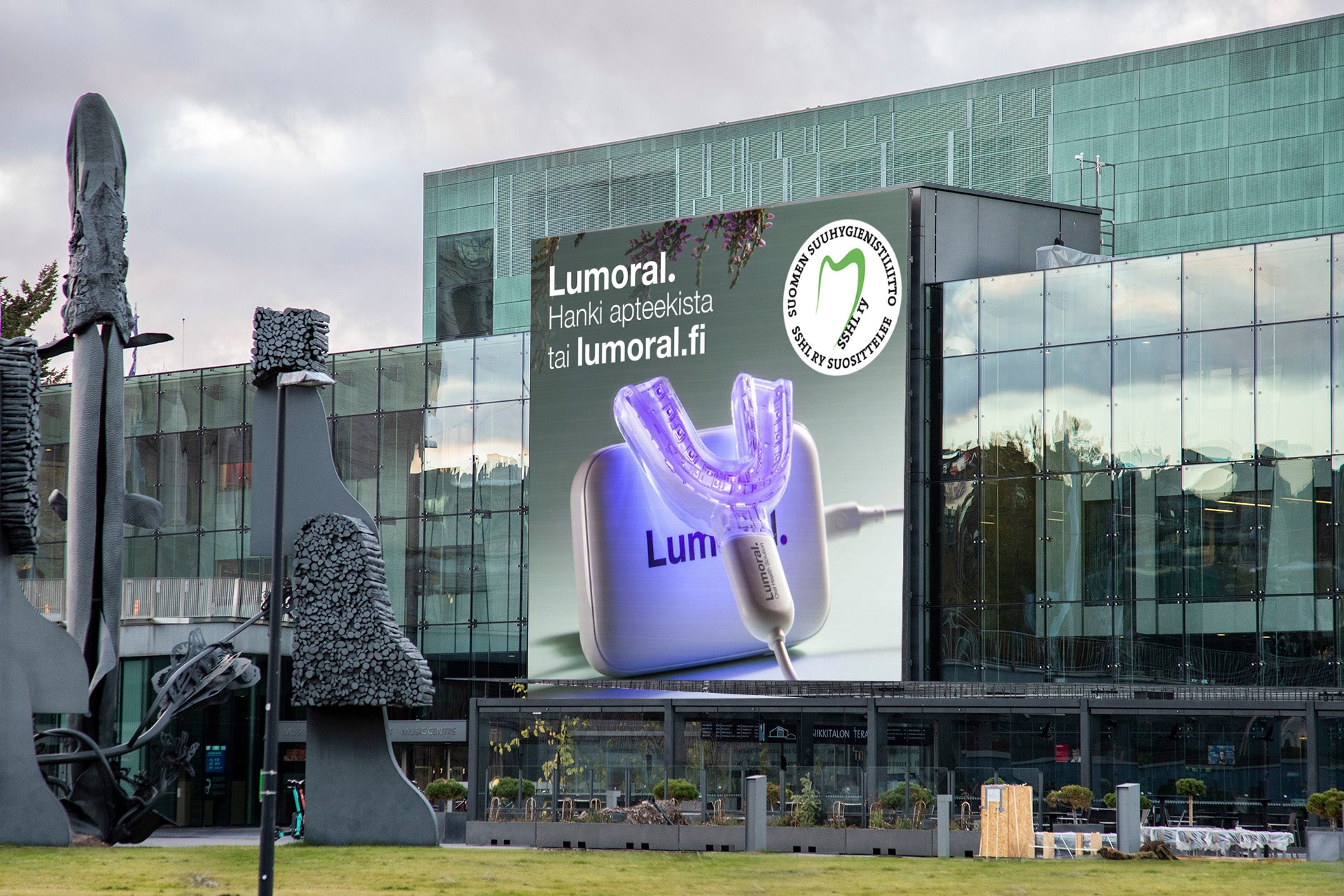Decreased fine motor skills and memory impairment in older people can make it difficult to maintain good oral hygiene. Lumoral's antibacterial aPDT phototherapy effectively eliminates harmful bacteria in the mouth and also treats advanced periodontitis.
A report published in Dentistry Journal describes a 78-year-old Swedish man with vascular dementia who has difficulty managing good oral health on his own. The help of a family member has been crucial in enabling him to maintain a daily dental care routine.
The study found that the man had advanced periodontitis and had lost seven teeth by the start of the study period in April 2021 (Figure 1).

Figure 1: Patient's condition on April 26, 2021, before starting Lumoral treatment. The white line represents the clinical attachment level of the teeth and the blue colour represents the infected periodontal pocket. The red dots represent bleeding from the gums during tooth cleaning.
Lumoral provides good support to daily dental home care
The patient was referred to a dental hygienist, but a lack of self-care meant the intervention only provided temporary improvement. In December 2021, the dentist recommended the patient to start using Lumoral as a supportive treatment.
The patient received antibacterial dual-light aPDT during a five month period with Lumoral every day. The treatment improved the patient's ability to maintain good oral health, while reducing the number of deep gum pockets from 43 to one. The clinical attachment level of the teeth also improved significantly.
Lumorinse mouthwash can be used regularly
Lumorinse mouthwash, which is an integral component of the Lumoral method, is a strong plaque-binding mouthwash that does not affect normal oral flora, unlike mouthwashes that contain chlorhexidine, for example. The antibacterial effect of Lumoral is achieved through the interaction between dual-light aPDT and the dye contained in the mouthwash that binds locally on the plaque.
Recovery from unstable stage IV periodontal disease during the 13-month follow-up period was excellent. Oral hygiene improved markedly, and the number of infected pockets decreased significantly. Only one infected periodontal pocket remained, and this may be at least partly due to occlusal trauma, the researchers point out (Figure 2).

Figure 2: Patient's condition after the follow-up period on 25 May 2022.
References:
- Trujiilo et al: "Repeated Daily Use of Dual-Light Antibacterial Photodynamic Therapy in Periodontal Disease-A Case Report". Dentistry Journal, 2022. https://doi.org/10.3390/dj10090163
- Nikinmaa et al: "Indocyanine Green-Assisted and LED-Light-Activated Antibacterial Photodynamic Therapy Reduces Dental Plaque." Dentistry Journal, 2021. https://doi.org/10.3390/dj9050052



Leave a comment
This site is protected by hCaptcha and the hCaptcha Privacy Policy and Terms of Service apply.